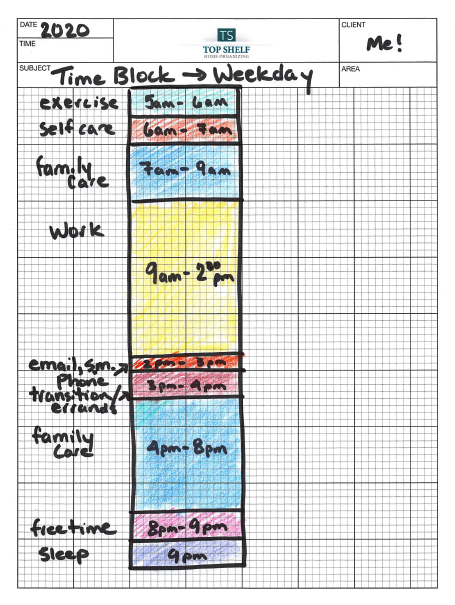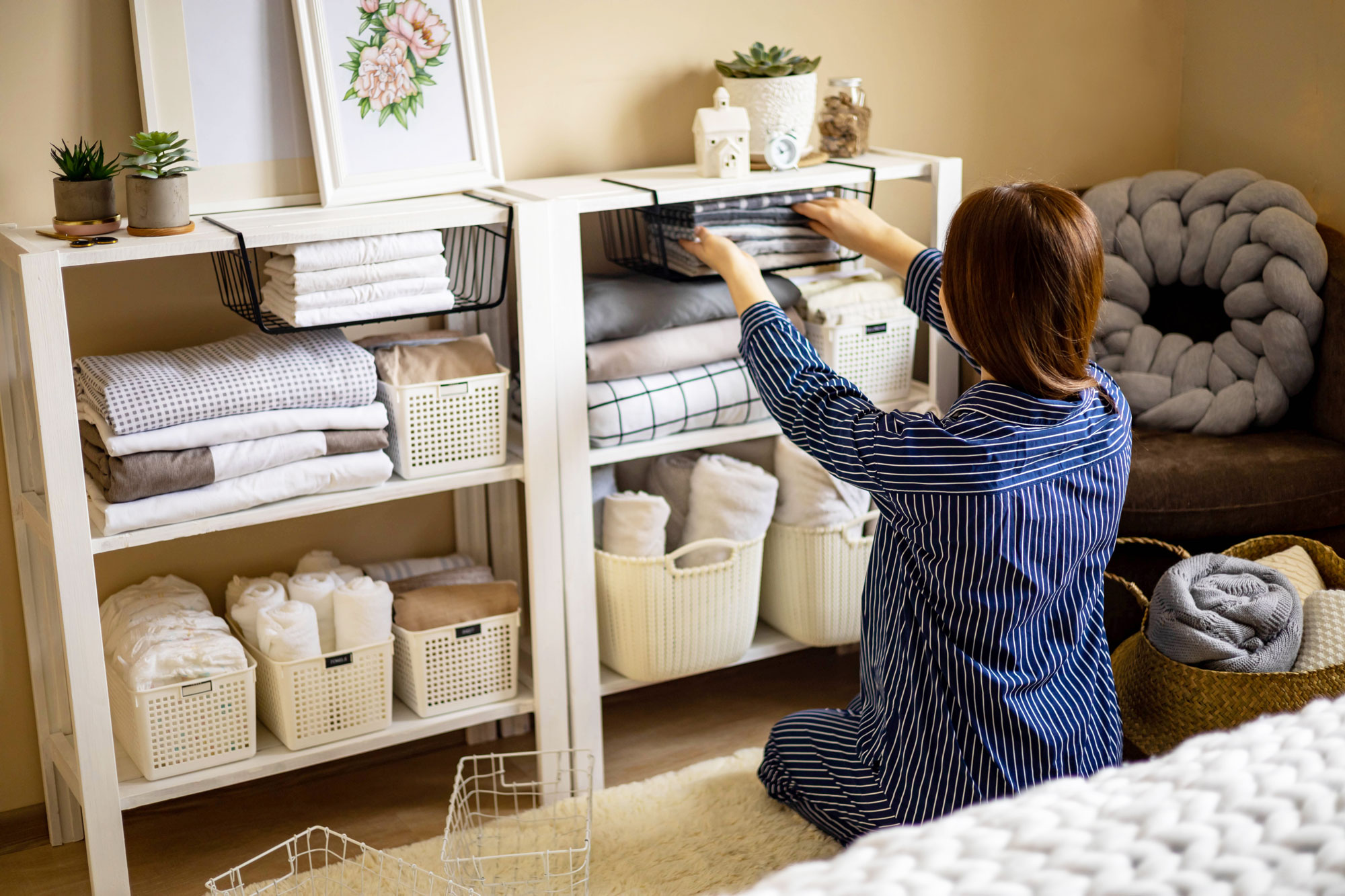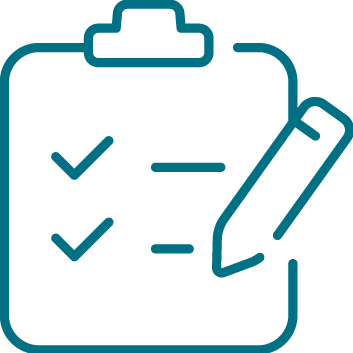by Jayme Radomski | Jul 10, 2023 | Cleaning, Clutter, Organizing, Productivity
Have you ever felt overwhelmed walking into a messy house after a long day of work or felt suffocated walking into your kid’s bedroom? There is a reason a messy, cluttered home is stressful. Having an organized home can have several positive effects on your mental health. Here are some reasons why:
Clutter and disorganization can contribute to feelings of stress and overwhelm. When your home is clutter-free and well-organized, it creates a calming and peaceful environment. It allows you to easily find what you need and minimizes the time and effort spent searching for things, reducing stress levels.
An organized home can enhance your productivity and focus. When everything has its designated place and is easily accessible, you can accomplish tasks more efficiently. A tidy environment helps you stay focused and prevents distractions, allowing you to concentrate on important tasks.
A cluttered home can lead to mental clutter. It can be overwhelming to have a constant visual reminder of unfinished tasks or disorganized spaces. By decluttering and organizing your home, you create a clear and ordered space that can promote mental clarity and reduce mental fatigue.
Living in a tidy and organized environment can positively impact your mood. A neat home can evoke a sense of pride, accomplishment, and satisfaction. It can also create a visually pleasing atmosphere that can boost your mood and create a sense of calm and harmony.
Your home environment can significantly affect your sleep quality. An organized bedroom free from clutter can create a serene and relaxing atmosphere that promotes better sleep. When your bedroom is organized, it becomes easier to unwind, both physically and mentally, leading to improved sleep patterns.
Having an organized home gives you a sense of control over your environment. It can provide a feeling of mastery and empowerment, as you are able to manage and maintain your living space effectively. This sense of control can translate into increased confidence and overall well-being.
Living in a chaotic and disorganized environment can contribute to feelings of anxiety. The uncertainty and constant visual reminders of unfinished tasks or clutter can be overwhelming. Organizing your home can create a sense of order and structure, reducing anxiety and promoting a sense of calm.
Remember that organizing your home is a process, and it’s important to approach it at a pace that feels comfortable for you. Start small, declutter one area at a time, and develop systems to maintain organization. Gradually, you’ll experience the positive impact it can have on your mental health. If organizing your home is daunting task, the professional organizers at Top Shelf Home Organizers are happy to help. Contact Jayme for a consultation. This article was written in collaboration with our friend, OpenAI.
by Jayme | May 26, 2021 | Clutter, Organizing, Productivity
 Welcome to Top Shelf Home Organizing. Are you ready to feel the freedom of an organized home and office? You deserve to have a home and office that is as organized and productive as it can be. You are busy, we understand. We are here to help you achieve, what you dream your space can be. It is time to stop sifting through the clutter to find what you need.
Welcome to Top Shelf Home Organizing. Are you ready to feel the freedom of an organized home and office? You deserve to have a home and office that is as organized and productive as it can be. You are busy, we understand. We are here to help you achieve, what you dream your space can be. It is time to stop sifting through the clutter to find what you need.
We can’t wait to work with you!
Professional organizing may be brand new to you. So we are sharing what the journey of hiring a professional organizer looks like. At Top Shelf Home Organizing, we take the time to get to know you, your space, your schedule, your lifestyle, and your personality before coming into your home or office. Our goals are to teach you simple solutions for your home, office, and life.
Here are the six steps to expect during your experience with Top Shelf Home Organizing.
Intake form
The form will be emailed to you shortly after your initial contact with us. It is designed to give you a chance to think about your true organizing goals and challenges are. The intake form is a preliminary understanding of the extent of your organizing needs and the people involved. Once this form is complete and returned, we will set up a phone call.
Phone Call
A 30-minute casual phone call will further identify your organizing goals and help us to get to know each other. This call will determine the extent of your organizing project, materials that may be needed, the timeframe of the project, and the number of organizers needed to complete. We will go through the intake form in depth.
On-Site Consultation
An on-site consultation will give us the whole picture of your space and allow us to meet one-on-one with each other. On-site we will finetune the project scope and goals while getting familiar with your space. We will take measurements and photographs, and create a list of materials if products are required. The on-site consultation lets us understand what is behind the scenes to better address your goals.
On-Site Organizing Sessions
The on-site organizing sessions are where the physical work takes place. The five basic steps of organizing will happen. Some people like to work side-by-side with us. Others may prefer to direct us on what to do and remain hands-off. Many people choose to be available for questions and occasional decision-making but continue to go about their daily lives and work. Often, once a relationship is established, the organizers work independently in this phase.
The steps to organizing a project of any size include:
- Gather – All items are removed from current storage.
- Sort – Items are sorted by category.
- Purge – Items no longer wanted, needed, and liked are donated, disposed and recycled.
- Organize – Items are organized into systems that fit and work for you.
- Label – All items are clearly labeled for ease of locating and returning to storage.
Homework
There may be tasks you prefer to complete on your own, independent of help from the organizers. Some choose to do this to make the project more economical. Other times, people want to go through items that are more personal on their own or with their family. We create a detailed, but a simple list of items that you can complete on your own, in between sessions with the organizer.
Follow-Up
We love to know how the new organization is working for you. We will touch base within a few days of the on-site session to discuss how the organization is going. This time is designed for you to give feedback and ask any questions you may have. We will also check in on any homework you may be working on. This is a great time to schedule future sessions to keep you meeting your goals and maintain what has been organized.
Top Shelf Home Organizing Policies
On-site consultations are $50. Reservation fees are $50. Both fees are credited to your service. Payment is due in full at the end of each on-site organizing session.
A cancellation fee of $50 applies to all cancellations and reschedules with less than 24-hour notice.
Refer someone to Top Shelf Home Organizing and receive 10% back in organizing services. Credits are earned for the first six months of services after referral. Credits are redeemed at a $75 per hour rate.
Top Shelf Home Organizing, LLC
Simple. Life. Solutions.
Jayme Radomski, Owner
262-373-9416
Jayme@topshelfhomeorganizing.com
topshelfhomeorganizing.com
facebook.com/topshelfhomeorganizing youtube.com/channel/topshelfhomeorganizing pinterest.com/TopShelfHomeOrg
instagram.com/jaymeradomski
linkedin.com/in/jaymeradomski
by Jayme Radomski | Oct 22, 2020 | Busyness, Clutter, Managing Time, Organizing, Productivity, Saving Time
 I was recently asked by an organization I belong to, to share my inspiration to start a business. I then realized what a better audience than all of you to share that inspiration with, as well.
I was recently asked by an organization I belong to, to share my inspiration to start a business. I then realized what a better audience than all of you to share that inspiration with, as well.
Top Shelf Home Organizing started in 2014 after having a discussion with friends about what our dream job would be if we could do anything. After watching all their jaws drop when I said I would organize people’s closets and basements, I knew there was a need. Since then, my business has been effectively helping people organize their homes and offices, simplify their routines, and clear their schedules. I am personally involved in all projects and have six wonderful ladies that help on various projects.
We help busy families with projects that range from pantry organizing projects to full-home, plus storage units. Some individuals just need the accountability to get through an organizing project, and others need full-service help where we handle the complete organizing project.
I have always had a bit of an entrepreneurial mind. Going back to babysitting jobs, waiting tables, and working as a consulting engineer, I always tracked the time I spent on a project, the revenue each project brought in, how my job could be done more efficiently, and what types of projects brought the most value. I treated projects like my own little business.
After 15 years of professional experience working in various leadership roles, I knew it was time to do something I was passionate about. My youngest of four kids was about six months old, and I was in the thick of balancing parenting and a career. So I knew my skill set would be valuable to other busy professionals.
My favorite part of Top Shelf Home Organizing is the clients. It can be a very personal thing helping them to organize their home, basement, or closet. I often hear stories from their childhood, past careers, current life struggles, and their aspirations. It is not uncommon to get a message from a client on a Sunday afternoon asking how my kids are, how big our puppy is, or asking for a recommendation on a carpenter, decorator, or just a simple hello. Clients become friends.
If you want to learn more about Top Shelf Home Organizing or just want to chat about an organizing project you have going, you can find me at:
Phone: 262-373-9416
Email: jayme@topshelfhomeorganziing.com
Web: topshelfhomeorganizing.com
Facebook: https://www.facebook.com/topshelfhomeorganizing
Pinterest: https://www.pinterest.com/TopShelfHomeOrg/
Instagram: www.instagram.com/jaymeradomski
by Jayme Radomski | Aug 5, 2020 | Organizing, Productivity, Work & Home Office
Learning and working from home are most productive when you are prepared. Here are three tips to help your home become an area of productivity and focus. These tips include the proper supplies, a thought-out workspace, and a consistent schedule. Here are some details on creating the most productive workspace your home can provide.
Supplies
 Have the appropriate supplies available for completing professional and academic tasks. A basic school supply list is a great starting point. Be sure to have extras for when the crayons break, the ruler is misplaced, the printer runs out of ink and erasers fall off the pencils. Also, consider electronic supplies such as a calculator, headphones, and charging cables.
Have the appropriate supplies available for completing professional and academic tasks. A basic school supply list is a great starting point. Be sure to have extras for when the crayons break, the ruler is misplaced, the printer runs out of ink and erasers fall off the pencils. Also, consider electronic supplies such as a calculator, headphones, and charging cables.
Organize Supplies by Type
Organize the supplies by type so they are easy to locate and easy to put away. Open cups or containers work great for pencils, pens, markers, etc., because you can take the entire container to your workspace and grab as you need. Label all containers, shelves, files, and areas that house school supplies. Follow the “place for everything and everything in its place” rule. Even the most obvious storage location should have a simple label.
Keep Supplies Simple
Keep the supplies simple. A fresh box of crayons, matching pencils that are freshly sharpened, a simple set of markers will make it easy for students to select the appropriate tool without overstimulation. A simple, clean file system and basic notepad will keep professional tasks organized. Store supplies in a location that is convenient for everyone to use and put away. If there are young learners, place supplies in an area that they can reach. Older learners will also need a convenient location too, that retrieval and replacement are mindless. The proper supplies will keep your home a well-supplied environment for productivity.
Work Space
Workspace Lighting
A well-thought-out workspace makes working and learning at home possible. Space will need to have good lighting, be well organized, have space to think, and have minimal distractions. The lighting of a workspace is very important to aid in productivity and alertness. Natural light is important for mental well-being. In the darker, winter months, lamps, and lighting with a warm light can help students feel alert while putting less stress on their eyes. Select a work area that has the best lighting for learning and working.
Organizing and Setting Up Work Space
Keeping a workspace organized will foster learning from home. Students will know where to find what they need to complete their work. The consistency of an organized workspace will also foster learning and reinforce a stable learning environment.
Work areas should have open space on the walls and on the floor to encourage creativity and thinking. While a good selection of wall art and learning posters will create a fun work area, a complete covering of the walls may create overstimulation and distractions. Limit the number of distractions in a work environment. If there are multiple people in the house, try to create smaller work areas for times when independent learning and working is necessary. The workspace should be separate from areas where there is a lot of traffic, younger children may be playing, or where adults will be on calls. Creating a productive workspace is a mix of art and science. Remember to keep it simple and clear for productivity.
Scheduling with Time Blocking
A consistent, time blocked schedule will help you stay focused and be the most productive at home. For adults and children, a consistent schedule is key. Keeping consistency day-to-day will help keep everyone focused on the tasks for the day. When creating a daily time block, you will dedicate each period of the day to a specific category.
What to Include in a Time Block
Time blocks include self-care such as sleep, grooming, exercise, fresh air, and breaks. The work and school day can be blocked out by subject or work tasks. However, meetings and face-to-face time with colleagues, teachers, and teams, may not have much flexibility, so your workday time block may be created around these meetings. There will need to be an end time for your work and school day. The end time gives everyone a time limit to their work and will encourage focus and productivity during work time. Your time block will also need an allocation for meals and meal preparation. Allowing enough time for meal preparation or planning will help keep the day on schedule. Allow for take-out and convenience meals occasionally, so this task doesn’t flood your schedule. The time block schedule should also allow for any housekeeping, yard work, and cleaning, as these are equally important tasks to keep your home a productive environment.
A general time block day that simplifies the details and includes only sleep, self-care, school/work, and family time is completely acceptable. You may personally want to include more details in your time block such as exercise, meetings, planning, etc. Keep it simple when working with the family as a whole. A consistent schedule that is communicated to everyone will promote productive work at home.
Whether your family is working from home full-time or part-time, a well-planned environment will reduce stress and encourage productive work and learning. Take time to select the proper supplies, plan out workspaces, and create a schedule. These three areas will help make working from home as productive as it can be.
Need help?
If planning and organizing are a challenge for you, Top Shelf Home Organizing can work with you. Contact Jayme if you want help setting up for a productive home.
by Jayme Radomski | Apr 29, 2020 | Digital, Productivity
 Having organized digital files will improve your productivity at home and at work. There are three areas that need to be considered when organizing your digital files. The file name, the file folder structure and where the files are saved are all important. Each area is discussed in detail here.
Having organized digital files will improve your productivity at home and at work. There are three areas that need to be considered when organizing your digital files. The file name, the file folder structure and where the files are saved are all important. Each area is discussed in detail here.
There are a couple things that need to be considered before digital files can be set up. Consider who will access the files. If you are sharing files with a team of people, they all need to understand and agree with how the files are named. Having those agreements will ensure the success of your organizational system. Be consistent with how digital files are organized so that retrieval is streamlined.
File name
File name is unique to each file you save. When determining a name, consider the files you have and your unique needs. Consider how you retrieve the files. What is the subject you will look for? Is it a client name, date or project number? You will want to include this information in the file name. Use short, but descriptive names. Underscores are a good way to keep proper spacing in the file name.
Include three items in the file name in a consistent order:
- Date – Keep the format of the date consistent (year, month, day, i.e. 2020-04-21)
- Subject – The subject part of the file name will have a few key words that will tell you what to expect when the file is opened (client name or number, project name, or other subject such as “Lectures,” “Contract,” “Invoice”).
- Code – A special code or unique identifier in the file name can help understand the file. These codes could include terminology such as draft, template or final, initial or name of author, version, or other information to help the file stand out.
Directory or File location
The directory or file path, should be simple and consistent across files.
How folders are named is an important part of the file name.
Business files may have names such as the client name, project name, project number, author name, administrative, vendor, contractor and/or facility.
Here are examples of how I would label my files for teaching, business and personal:
School
- Course Number and Name
- General Course Information
- Lesson Sheets
- Lecture Notes
- Handouts
- Assignments
- Laboratories
- Exams
- Professional Development and Training
- Human Resources
- Department
Business
- Administrative
- Client Last Name, Client First Name
- Contract
- Receipts
- Invoices
- Photos
- Marketing Contractor
- Graphic Design Contractor
- Carpenter Contractor
- Organizing Contractor, Last Name, First Name
- Vendors
- Network
Personal
- Taxes
- Medical
- Utilities
- Phone
- Automobile
- Insurance
- Kids School
- Kids Activities
- Investments
- Bank
- Pet
- Boat
Saving Files
Common Mistakes
- Saving to your desktop, instead just put a short cut on your desktop.
- Overcomplicating and over thinking where files get saved and what the name should be. Keep it simple.
- Avoid confusing abbreviations and acronyms.
Be consistent across all file and folder names. Consider: Google Drive, Box, iCloud, Drop Box, and Email Folders. Pick a method to back up your files. You may select cloud-based storage or an external hard drive. Personal information should be backed up to a removable drive.
Like any organizing project, there are five basic steps to getting your files organized:
- Gather: Make a list of all the categories of files you have. Include physical files, digital files, and email files.
- Sort: Group them into logical categories. There will likely be main categories and subcategories
- Purge: Remove the files that are not needed anymore.
- File: Create files for all of the main categories and subcategories. Place files into the folders in chronological order with the newest files toward the front. When a new file comes in, it is front and center.
- Label: Label the folders. Keep labels consistent across paper files, digital files and email files.
Too Overwhelming?
Start from ground zero if you are truly a hot mess. Set up an organized file structure and begin organizing the files that are current. Don’t worry about old files right now. Take some time to work out the bugs of your new file structure. Once you are settled into a routine and your file system has proved to be effective, go back and organize your older files.
At Top Shelf, we love to help busy professionals and families establish an effective filing system to improve productivity and reduce stress. See how we can help you get this area of your busy life organized. Reach out to Jayme for some tips on getting your files organized.
by Jayme Radomski | Feb 12, 2020 | Busyness, Managing Time, Productivity, Saving Time

You should protect your time with time blocking, regardless of your responsibilities. Whether you are a busy professional well into your career, a full-time caregiver to your family, or just juggling many responsibilities, blocking your time will set boundaries around your professional and personal time and allow you to maximize your productivity.
Blocking your time is a written reminder of where you need be, literally and mentally, at any time of the day. Time blocking allows you to focus deeply on the task that needs to be completed. For example, when you have time blocked for self care in your schedule, all you need to focus on in the self care time block is caring for yourself. Just like budgeting your money, time blocking makes you aware of how you spend your time (and where you waste your time). Time blocking is a written commitment to what you spend your time on.
To start time blocking, make a list of your daily tasks, this is a high level list. Each task may have multiple sub-tasks within it. We will address these later. This is just a list of what you should do everyday. As an example, here is a list of Jayme’s daily tasks. Included in the list are a couple items I would like to make time for (reading, a hobby and free time).
- Sleep
- Self care
- Family care
- Reading
- Exercising
- Work
- Email, Social Media
- Planning for tomorrow
- Free time
- Hobby
Combine smaller tasks into a task batch. Task batching is grouping smaller tasks into one chunk of time. This could include checking and responding to email, returning phone calls and checking social media. Another batch may include a few items that are complete during some personal time (reading, hobby and free time). A morning routine could also be batched, as these events naturally occur together and fit into a schedule by design (self care, family care and exercise). In this example, family care is also a batch. Family care may include cooking, mealtime, bathing, homework help, and carpooling.
Your work time is naturally where you would task batch items you need to complete to make money. Notice I wrote, “make money.” This is where you mark your time as busy to focus on the items that eventually pay your bills. You tell your assistant or whoever you work with that your door is closed, and non-critical family chats and conversations can wait. This is the time you focus on your work. There are other times of your day where you may mark yourself busy, as well. These times may be when you are physically not available such as sleep and exercise.
Day theming works well if you have large portions in each day that you need to dedicate to different areas to meet the same goal. For example, if you work from 9am to 3pm each day, you may want to dedicate one day for client meetings and client follow up, another day for writing, another day for administrative tasks, and two other days for marketing. If you have projects, there are days of the week you may need to dedicate to the one or many projects you have going on.
Time blocking takes planning and revisions. Your initial plan for a time block may need to be revised frequently in the beginning. Give yourself some grace. If you are not seasoned to planning your day, keep it very simple in the beginning and allow flexibility. Life if going to happen and your schedule may go astray. You will find peace though knowing that there is a daily plan, and if you stick to the plan productivity will happen. As your productivity increases and evolves, you will find more free time in your day and your week.
Time blocking can be done with a simple paper calendar or planner, or with an online calendar or application. I would recommend starting with a simple paper and pencil to plan your time. After getting used to the idea of scheduling your time into blocks, try a digital calendar or app where you can experiment with colors and tags.
If planning your time causes you stress and anxiety, Top Shelf Home Organizing would love to help you on your journey. Jayme can help you plan your time blocking, set your goals, and keep you accountable to meeting those goals.











 Have the appropriate supplies available for completing professional and academic tasks. A basic school supply list is a great starting point. Be sure to have extras for when the crayons break, the ruler is misplaced, the printer runs out of ink and erasers fall off the pencils. Also, consider electronic supplies such as a calculator, headphones, and charging cables.
Have the appropriate supplies available for completing professional and academic tasks. A basic school supply list is a great starting point. Be sure to have extras for when the crayons break, the ruler is misplaced, the printer runs out of ink and erasers fall off the pencils. Also, consider electronic supplies such as a calculator, headphones, and charging cables.
